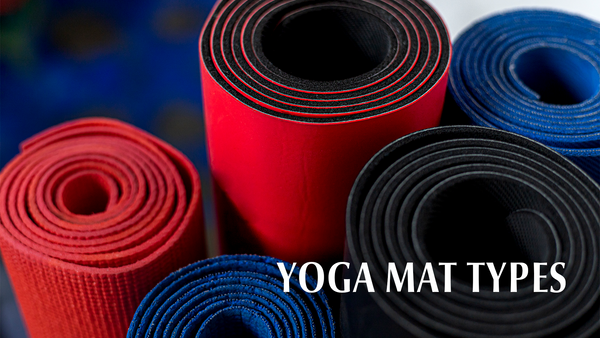Yoga mats are the most essential accessories when it comes to yoga as they provide us with a stable and comfortable surface to practice on. Ever wondered how these yoga mats came about? Fasten your seatbelts as we would be gliding through history very soon to uncover the fascinating history. Let's discuss the basics first.
What are Yoga Mats?
Yoga mats are simply the mats on which yoga is practiced and they are designed to provide us with a soft, stable and non-slippery surface to help us maintain our balance and avoid injury when practicing yoga. These mats come in different sizes, thickness and are made with different materials which determines the texture, feel, weight, and how they provide cushioning during the practice. With that said, let’s begin our history lesson.
History of Yoga Mats
Before mats were used at all, yoga practice was done on the bare ground or on Kusha grass and later people started spreading their cloths and animal skin on the floor to provide some sort of comfort and prevent their bodies from having direct contact with the floor.

Later on, as the practice became more challenging with the development of more challenging asanas (physical postures), yoga practitioners saw the need for more supportive surfaces, so they began to use towels and cotton mats or rugs that are rectangular in shape just like the yoga mats we have nowadays. The clothes definitely had to evolve into cotton mats and towels as these provided them with much better grips than plain cloths did.
In the early 1960s, foam padding was added to the towels and cotton mats to provide it with more cushioning. This we can say became the first leap into the yoga mats we know today. Although the foam padding provided a much softer base, it was not enough as it was too soft and did not provide enough stability for standing posture. You can picture doing yoga on soft foam, your legs would probably be sinking into the foam.
Let’s jump to the 1970s, rubber padding or underlay was becoming popular because it was thicker than the foam padding and it provided more stability for yoga practitioners. Although this was a better initiative, it was far from perfect as the rubber was not durable enough and it deteriorated quickly after long usage.
In the 1980s, the first sticky mats were introduced. To be exact, in 1982, Angela Farmer while teaching yoga in Germany created the first modern yoga mat, she cut carpet underlay into towel size during her yoga classes for her students to be more comfortable. When she returned home to London with the material, Angela's father, Richard Farmer, took the mat to the next level, he contacted the German padding manufacturer and became the first retailer of "sticky mats”. These padded mats provided more grip and cushioning for the practice.
Later in the 1990s, PVC (Polyvinyl chloride) which is a form of plastic that is not biodegradable was introduced. The plastic was easy to manufacture and had greater durability and these gave way to widespread usage of yoga mats as they were cheap and on budget for many people.
Due to the non-degradable factor of the PVC mats, better alternatives had to emerge. They came in the form of the use of natural rubber, jute, cotton and hemp, cork, synthetic rubber, TPE (Thermoplastic Elastomers) and many others.
Recent development now tends towards the use of recycled neoprene materials to create yoga mats. This is pioneered by Circular Flow and Kati Kaia is partnering with them to develop more eco-friendly mats and reduce neoprene landfills. This brings us to the end of our history lesson.
Best Yoga Mat Material

There are lots of eco-friendly materials being used nowadays and this makes it difficult to be specific about the best option. It now depends on the individual’s needs and preference to decide which one to buy. PVC mats are affordable and durable, but they are not eco-friendly. We use natural rubber to produce our mats and they are very eco-friendly, but they are a bit more expensive than PVC mats. Cork mats are good too as they are eco-friendly and also provide excellent grip but they may be too firm for some people. Neoprene mats are on their way, be sure to check here constantly as they will be rolling out soon.
Alternatives to Yoga Mats
There are alternatives to the use of yoga mats, but they may not provide the feel and cushioning a yoga mat provides. Some people choose to use a towel or blanket instead of a traditional mat while some prefer to practice yoga on a grassy or sandy surface on the beach or backyard. Ultimately, you just have to find out what works for you.
Choosing the Best Yoga Mat
There are some critical factors to consider when choosing which mat to buy, you should consider the type of yoga you intend to practice, the surface you will be practicing on, the material used in making the mat, its thickness, length, texture and durability and of course the price.

In conclusion, the history of yoga mats goes from bare floor and practicing on grass to using cloth and animal skin, to foam and rubber padding, then to sticky mats which is like the first modern mat, then to PVC and all other materials we have now. As the popularity of yoga continues, we would continue to see improvements in our mats and watch out for technology being added to your mats such as compact folding, sweat removal, temperature control and many more.








0 comments